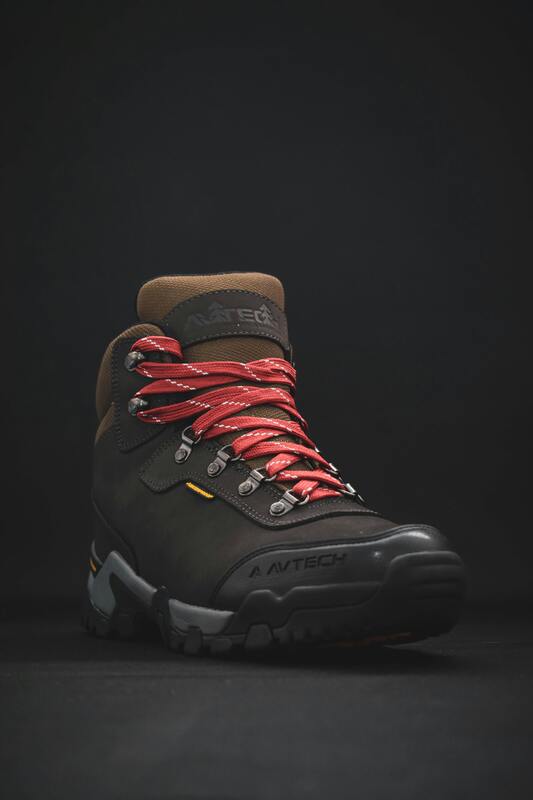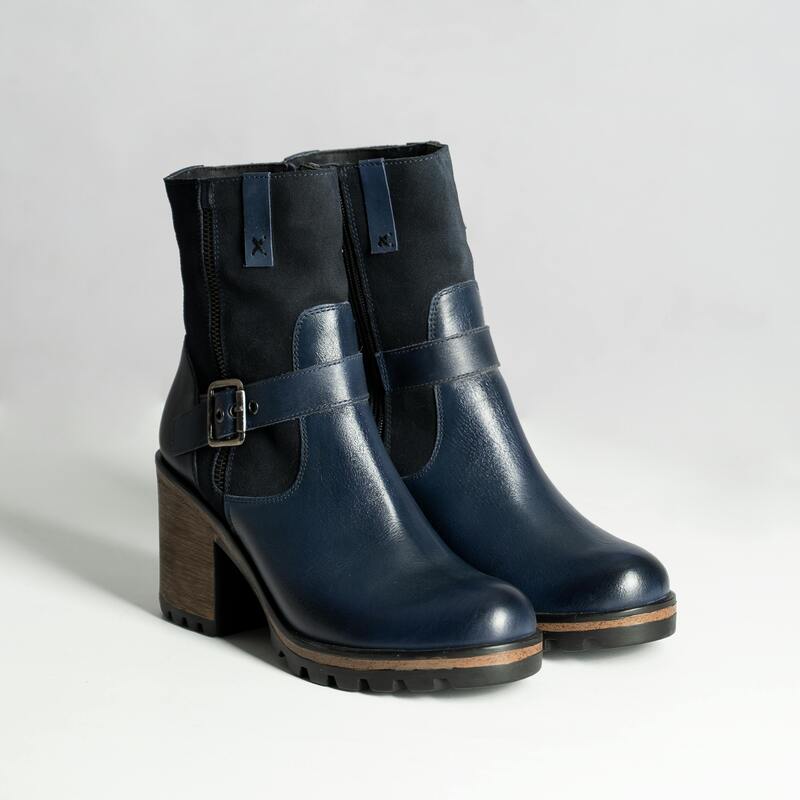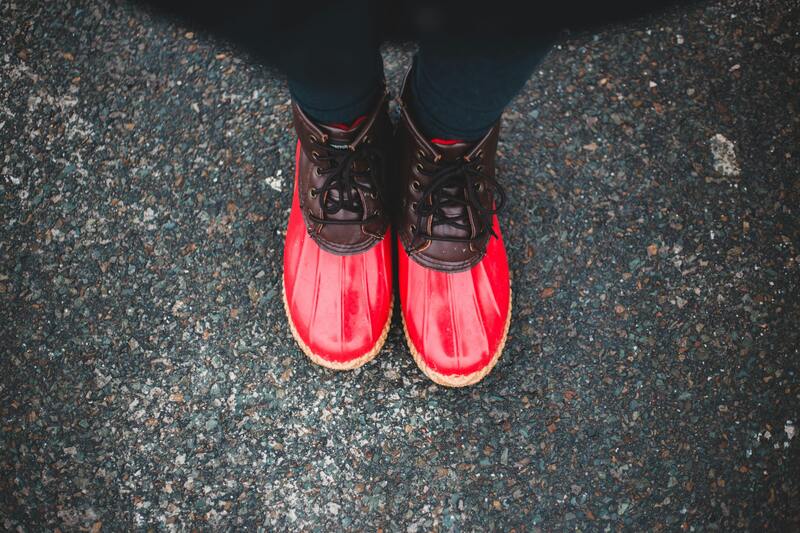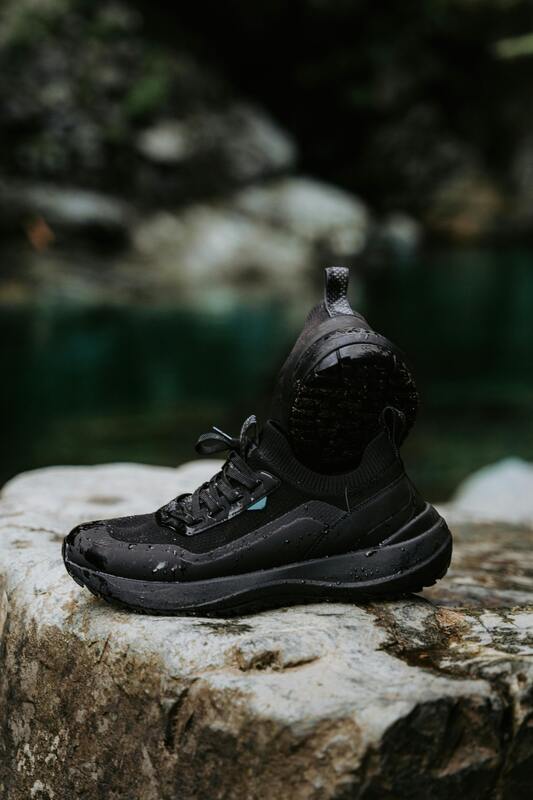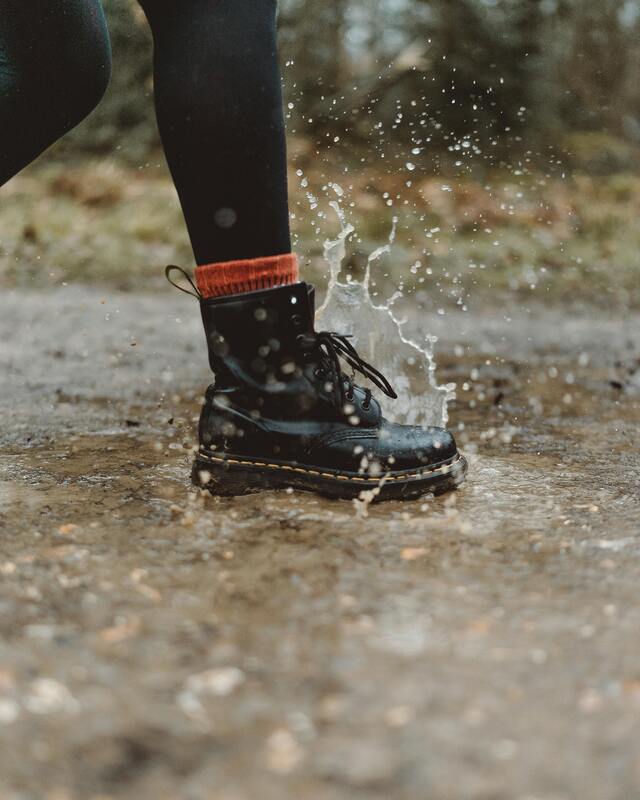Waterproof shoes keep your feet dry when it's wet outside, be it rain, snow, or just damp grass. They're not like water-resistant shoes, which only work for a little bit of water or light sprinkles.
🔹 What Makes a Shoe Waterproof?
1. The Outside Stuff
* Fake or treated Leather – Either already keeps water out, or it's treated to do so.
* Rubber – Totally waterproof, used in boots and bottoms of shoes.
* Nylon or Polyester with a special coating – You see this a lot in hiking kicks or sneakers.
2. The Waterproof Layer
* A thin bit inside the shoe stops water but lets your foot sweat get out.
* Usually made of ePTFE or polyurethane.
* It's tucked between the outside and inside of the shoe.
3. Sealed-Up Seams
* Normal shoes have tiny holes from sewing that can let water in. Waterproof shoes fix this by:
* Using tape over the seams
* Gluing or sticking everything together
4. Tongue That's Attached
* Stops water and junk from getting in where the laces are. It's connected to the shoe on both sides.
5. The Bottom of the Shoe
* Has deep grips to stop you from slipping when it's wet.
* Some are made to push water away from your foot.
🔹 Types of Waterproof Shoes
| Type | What It Is | What It's For |
| :--------------------- | :--------------------------------------------- | :----------------------------------------- |
| Waterproof kicks | Looks like normal shoes but are waterproofed | Just walking around town, trips |
| Waterproof Hiking Shoes | Tough, lasts long, lets your feet breathe | Trails, long walks outside |
| Waterproof Boots | Go up to your ankle, strong, sometimes warm | Snow, rain, big puddles |
| Waterproof Work Shoes | Made to keep you safe, stop you from slipping | Building sites, factories |
| Waterproof Dress Shoes | Fancy shoes that are secretly waterproof | Work, events when it's wet |
| Waterproof Sport Shoes | For running or working out when it's wet | Sports, exercising in the rain |
🔹 Good Things About Waterproof Shoes
* Keeps your feet dry when it's wet.
* Comfy because they let your feet breathe (no sweat building up).
* Keeps you safe from cold, mud, and germs.
* Last longer because water can't mess them up.
* You can wear them anytime – rain, snow, whatever.
🔹 Bad Things About Waterproof Shoes
* Don't let your feet breathe as well as normal shoes (mainly when it's hot).
* Cost more because of the stuff they're made of.
* Can be heavier, depending on how they're made.
* Not good if you go underwater – They keep out rain, but not if you're swimming!
🔹 Taking Care of Waterproof Shoes
* Clean them often: Get rid of dirt and salt, so they don't get ruined.
* Put on waterproofing spray (for cloth or leather) every few months.
* Dry them right:
* Don't use a hairdryer.
* Stuff them with paper or use a shoe dryer.
* Keep them in a cool, dry spot.
* Look for damage on the seams and bottom – fix or replace if needed.
🔹 Waterproof vs. Water-Resistant vs. Water-Repellent
| Term | What It Means |
| :------------- | :----------------------------------------------------- |
| Waterproof | Totally stops water from getting in |
| Water-Resistant | Can stop water for a short time |
| Water-Repellent | Has a coating to push water away, but not fully waterproof |
🔹 Other Ways to Waterproof (Do It Yourself)
* Waterproof Sprays: For cloth shoes.
* Wax: Good for leather shoes (like beeswax).
* Plastic Covers: For when it's really pouring.
* Silicone Sprays: For more water protection.
Keep in Mind: These are quick fixes, not as good as real waterproof shoes.
🔹 When to Wear Waterproof Shoes
* When it rains a lot.
* When it's snowy.
* When it's muddy outside.
* If you work where it's wet.
* When you travel to places where you don't know the weather.
* At outdoor events and camping.
🔹 Before You Buy
* See how well they let your feet breathe if you're using them when it's hot.
* Make sure they support your feet well.
* Pick the right height for your needs: low for walking around town, high for rough outdoors.
* Think about how heavy they are if you're walking far.
* Get the right shoe for what you're doing – don't wear hiking boots every day if you don't need to.
🔹 What Makes a Shoe Waterproof?
1. The Outside Stuff
* Fake or treated Leather – Either already keeps water out, or it's treated to do so.
* Rubber – Totally waterproof, used in boots and bottoms of shoes.
* Nylon or Polyester with a special coating – You see this a lot in hiking kicks or sneakers.
2. The Waterproof Layer
* A thin bit inside the shoe stops water but lets your foot sweat get out.
* Usually made of ePTFE or polyurethane.
* It's tucked between the outside and inside of the shoe.
3. Sealed-Up Seams
* Normal shoes have tiny holes from sewing that can let water in. Waterproof shoes fix this by:
* Using tape over the seams
* Gluing or sticking everything together
4. Tongue That's Attached
* Stops water and junk from getting in where the laces are. It's connected to the shoe on both sides.
5. The Bottom of the Shoe
* Has deep grips to stop you from slipping when it's wet.
* Some are made to push water away from your foot.
🔹 Types of Waterproof Shoes
| Type | What It Is | What It's For |
| :--------------------- | :--------------------------------------------- | :----------------------------------------- |
| Waterproof kicks | Looks like normal shoes but are waterproofed | Just walking around town, trips |
| Waterproof Hiking Shoes | Tough, lasts long, lets your feet breathe | Trails, long walks outside |
| Waterproof Boots | Go up to your ankle, strong, sometimes warm | Snow, rain, big puddles |
| Waterproof Work Shoes | Made to keep you safe, stop you from slipping | Building sites, factories |
| Waterproof Dress Shoes | Fancy shoes that are secretly waterproof | Work, events when it's wet |
| Waterproof Sport Shoes | For running or working out when it's wet | Sports, exercising in the rain |
🔹 Good Things About Waterproof Shoes
* Keeps your feet dry when it's wet.
* Comfy because they let your feet breathe (no sweat building up).
* Keeps you safe from cold, mud, and germs.
* Last longer because water can't mess them up.
* You can wear them anytime – rain, snow, whatever.
🔹 Bad Things About Waterproof Shoes
* Don't let your feet breathe as well as normal shoes (mainly when it's hot).
* Cost more because of the stuff they're made of.
* Can be heavier, depending on how they're made.
* Not good if you go underwater – They keep out rain, but not if you're swimming!
🔹 Taking Care of Waterproof Shoes
* Clean them often: Get rid of dirt and salt, so they don't get ruined.
* Put on waterproofing spray (for cloth or leather) every few months.
* Dry them right:
* Don't use a hairdryer.
* Stuff them with paper or use a shoe dryer.
* Keep them in a cool, dry spot.
* Look for damage on the seams and bottom – fix or replace if needed.
🔹 Waterproof vs. Water-Resistant vs. Water-Repellent
| Term | What It Means |
| :------------- | :----------------------------------------------------- |
| Waterproof | Totally stops water from getting in |
| Water-Resistant | Can stop water for a short time |
| Water-Repellent | Has a coating to push water away, but not fully waterproof |
🔹 Other Ways to Waterproof (Do It Yourself)
* Waterproof Sprays: For cloth shoes.
* Wax: Good for leather shoes (like beeswax).
* Plastic Covers: For when it's really pouring.
* Silicone Sprays: For more water protection.
Keep in Mind: These are quick fixes, not as good as real waterproof shoes.
🔹 When to Wear Waterproof Shoes
* When it rains a lot.
* When it's snowy.
* When it's muddy outside.
* If you work where it's wet.
* When you travel to places where you don't know the weather.
* At outdoor events and camping.
🔹 Before You Buy
* See how well they let your feet breathe if you're using them when it's hot.
* Make sure they support your feet well.
* Pick the right height for your needs: low for walking around town, high for rough outdoors.
* Think about how heavy they are if you're walking far.
* Get the right shoe for what you're doing – don't wear hiking boots every day if you don't need to.
